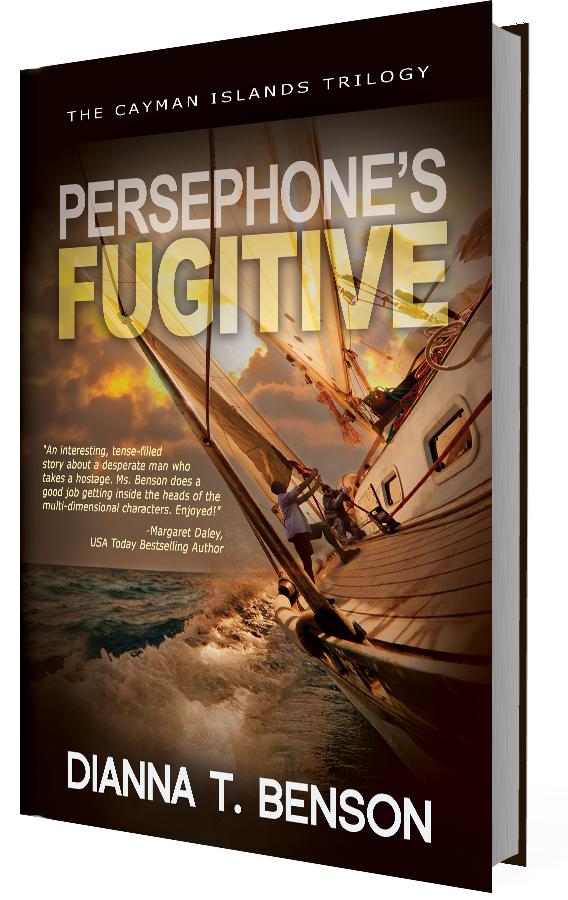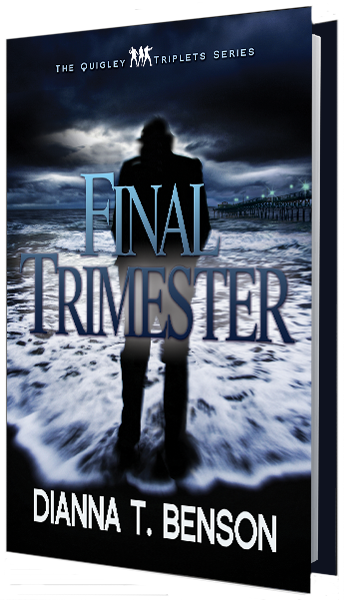Motor Vehicle Collison
Posted by dtbAdmin on Apr 22, 2013 in Blog, Medical/EMS | 0 comments
I love this post by Dianna Benson, EMT written in first person about the treatment of a patient involved in a MVC. A lot of information presented in such an interesting way. Dianna’s debut novel, The Hidden Son, released in March. Welcome back, Dianna! EMS #16 and #22 MVC at Park Avenue and Green Street. I toss the rest of my sandwich into a trashcan, and rush out of the fast food joint toward my ambulance, my partner behind me. Less than five minutes later, we roll up on scene behind an arriving ladder fire truck. I slip mybright orange reflector EMS vest over my head and lurch toward two cars mangled together in a huge intersection, their hoods now one. The EMS #22 crew heads to the one patient in one car, so my partner and I bolt for the two patients in the other. A civilian is leaning inside the driver’s door. “Sir?” I say, approaching. He looks at us, eyes wide, face pale. “Glad you’re here. I’m a doctor, an urologist, but I see patients in my office. I don’t deal with emergency—” “It’s okay. We got it.” Blowing out a sigh, he backs away. Unconscious, the driver’s face is buried in the deployed air bag, arms dangled around it in a laxhug. “Sir?” I feel his pulse. It’s thready and rapid. Blueness surrounds his mouth and colors his lips, his chest not rising and falling. “Respiratory arrest,” I say to my partner who’s assessing the unconscious passenger, the lifeless patient’s head caught in the shattered door window. Frowning, my partner shakes his head. “Cardiac arrest over here. Facial skin ripped away. Neck twisted 180 degrees and split open. Bled out.” Code for: We can’t do a thing for her. My partner rushes our equipment-loaded stretcher around the trunk to the driver door, as I wave a firefighter over to climb into the backseat. With both hands, the firefighter stabilizes the patient’s head straight against the headrest as I assess the minor facial wounds caused by flying glass. Another firefighter grabs the airbag, punctures it and rips it out of my way. I insert an oropharyngeal down my patient’s throat to protect his airway. I cover his mouth and nose with a BVM—bag valve mask—connected to oxygen tubing and a D-tank running at 15 liters per minute. As I squeeze the football-size bulb every five seconds to oxygenate his system,I assess his legs. Right femur appears fractured, left is covered with bleeding...
Read MoreCardiac Arrest in EMS Field
Posted by dtbAdmin on Mar 11, 2013 in Blog, Medical/EMS | 0 comments
Dianna Benson writes a compelling first person account of a young woman in cardiac arrest. Dianna’s debut novel, The Hidden Son, debuts this coming March. Hope you’ll check it out. Welcome back, Dianna! Our station buzzer and waist radios go off at midnight. EMS 8. Cardiac arrest. Terminal C, near gate 34. My partner and I rub the sleep from our eyes and restart our brains. On scene in a near empty airport terminal, a middle-aged woman waves us toward her. Four airport security officers appear relieved by our arrival. All four scramble away from the unconscious patient’s side as I radio for firefighter assistance. “Help my daughter, please,” the woman begs in a panic. “She just fainted.” The daughter appears to be in her early twenties. “Ma’am?” I say, touching her shoulder. Unresponsive. I feel her carotid artery. Pulseless. I begin chest compressions. “Does she have any health issues? Allergies?” I ask the mother. “No,” she cries out. “Nothing.” My partner presses defibrillator pads to our patient’s chest—one under her right clavicle, the other on her side over her left lower ribs. “What was she doing when she collapsed?” I ask the mother as I continue non-stop chest compressions. “Walking to our gate.” The mother pants several quick breaths. “We’re catching the red eye to Paris. Help her. Please. She’s only twenty-four.” I swallow the sadness clogging my throat. God, please give this mother strength. The cardiac monitor assesses the heart rhythm. The wave pattern displays on the screen, and I interpret it. “Pulseless ventricular fibrillation,” I tell my partner as he whips out our IV kit. We defibrillate the patient. A small crowd gathers near us as two firefighters arrive on scene to help us. “Take over compressions,” I say to the two males, and one of them does so, as my partner drills a hole into our patient’s shin for intraosseous access, the preferred and more effective route over intravenous in cardiac arrest. I dig into our airway bag for an airway adjunct, an oxygen tank, and a BVM—bag valve mask. Iinsert the oropharyngeal airway down the patient’s throat and connect the BVM to an oxygen line to oxygenate our patient. “Bag her,” I say to the other firefighter, and he grabs the BVM from my hand. I whip out our med box and spike a bag, as my partner finishes the IO (intraosseous) line. We push 1mg epinephrine and 40 unit vasopressin into the line; the firefighters continue with chest compressions and bagging. I prick the patient’s finger and a run a BGL—blood glucose level—for possible hypoglycemia.“Does she take any medications?” I ask the mother for...
Read MoreGun Shot Wound
Posted by dtbAdmin on Feb 11, 2013 in Blog, Medical/EMS | 0 comments
EMS expert and author Dianna Benson blogs today writing a first person account of caring for a gunshot wound victim. I love how she’s written this post with such detailed information that portrays the medical info so accurately. EMS 4. Gun Shot Wound. 123 Main Street, Apartment G. I flip my book closed—Jordyn Redwood’s newest suspense—and zip it inside my backpack. I rush from my station’s crew quarters to the ambulance bay. My partner slips behind the steering wheel; I signal us en route to the call via our laptop nailed to the dashboard. “Twenty-nine year old male, GSW in abdomen, conscious and breathing,” I relate the facts as I read them on the laptop screen. “Raleigh PD already on scene.” I wait for further information to display; my nerves rev up. GSW calls often place EMS in deadly situations. Even if the scene is safe at first, bystanders, the shooter, even the patient can turn violent. Prepared for anything at any given moment is the hallmark philosophy to staying alive. “RPD in process of securing scene,” I read the new information out loud. “Stage near the manager’s office.” “Manager’s office?” my partner turns our ambulance left at an intersection. “That can’t be far enough.” I hear the fear in his voice. Only six months ago, he suffered a knife wound from a patient’s husband who didn’t want us to resuscitate his wife. “I know these apartments,” I say. “Building G is in the back. Furthest away from the office.” More information came across the screen. “Patient took off on foot. Stumbled away from the shooter. He’s down. Gas station on corner of Hill Street and Brown Avenue.” Once we arrive at the gas station and notice RPD has the scene in their control, I duck under the yellow tape blocking the public from our GSW patient lying supine in one of the parking spaces like a car. Five firefighters surround the patient, each one pressing towels to his abdomen, as countless cops hold the perimeter they’ve established. The firefighters step away, allowing us to take over medical care. “Sir, can you tell me your name?” I yell over the chaos surrounding me. “Ronald,” he...
Read MoreAuthor Question: Car Accident Injuries 1/2
Posted by dtbAdmin on Oct 3, 2012 in Blog, Medical/EMS, Uncategorized | 0 comments
Author questions are some of my most favorite posts to do. How do you really write an accurate medical scene? Which injuries are plausible and which are not? Amy is visiting and Dianna Benson (EMS expert) and myself (ER nurse extraordinaire) are going to tackle her question. Dianna will be today and I’ll be Friday. Amy asks: I am putting one of my characters in a pretty major car accident — a rollover in which she lands on a broken window and ends up with a lacerated back full of broken glass, in addition to a broken leg, fractured ribs, etc. I need a scene to take place in the hospital where she is recovering. With those kinds of injuries, what treatments would she be under? More importantly, how exactly would she be laying in the bed? Obviously not on her back. But would she be on her side or stomach? Perhaps that depends on the other injuries she sustains… but the lacerated back is the biggest one I want her to have. Dianna Says: The story and the characters are first priority, so I’ll make the medical aspects fit into what you’ve explained. Since it sounds like you don’t have an EMS scene at all (no scene where rescue crews—EMS and fire—are present), it keeps it simple from my end, but I’ll give you pertinent background on what I’d do if I were the EMS crew on your scene. Also, based on the MOI (mechanism of injury) you described, I’ll explain what type of injures are possible. Every patient is different, every MVC (motor vehicle collision) is different, and every rollover is different, so that definitely gives you leeway. First of all: I like the scenario: Your character runs a red light causing another car to slam into hers, which causes it to spin then roll over while her back is dragged on the asphalt over the broken window. I also like the adding of a boyfriend; yes, he’d definitely worsen her injures by landing on her, so have him either land elsewhere inside the car or just have him belted in (unless you want her seriously injured to the point she’s in-hospital...
Read MoreA Scoliosis Journey
Posted by dtbAdmin on Jul 20, 2012 in Blog, Medical/EMS | 0 comments
If you want your character to struggle with a disease starting in childhood and worsening in adulthood, scoliosis may be the right one to choose to create long-term drama and conflict. At age nine my daughter was diagnosed with scoliosis with a twenty degree double curvature; meaning, her spine was S-shaped due to a thoracic curve and a lumbar curve jutted in opposite directions. For a year she only had x-rays every few months to monitor the curvature as she grew. At age ten it increased to twenty-eight degrees, so she was placed in a full body (torso) bending brace twelve hours a day. The bending brace overcorrected her spine to allow only twelve hours per day wear versus twenty-four. She wore the brace for five years and had x-rays regularly to monitor the curvature. At age fifteen, an x-ray of her hip showed the growth plate closed, indicating she was nearly done growing. Scoliosis protocol at that point indicates the brace is no longer necessary. Every patient is different, and for her the curvature worsened out of the brace, the first year to thirty-three degrees. An increase isn’t uncommon as the body adjusts to life without a brace, but unfortunately her increase continued and was rapid and severe. When she was seventeen, her curve worsened to thirty-seven degrees. Less than a year later to forty-four degrees, which led to her five-hour surgery May 2012 performed by the top scoliosis surgeon in America who operates on professional and college athletes. Her freshman year in college (fall 2011), she started to suffer with acute back pain. A full scholarship college swimmer, she pushed through the pain during the swim season, even at ACC Championships in February and NCAA Championships in March. From fall to spring, she endured three in-hospital spinal injections, plus took pain meds and an anti-inflammatory regularly. Due to the year of intense pain she suffered, her Virginia Tech coach was stunned by her performance at ACCs—she broke records, swam the fastest 100 backstroke time of the meet, and her performance qualified her for NCAA Championships, which is tougher to qualify for than US Olympic Trials. At NCAAs, her right leg numbed due to nerve involvement and her back muscles froze to protect her spine, forcing the need for the VT trainers to drag her out of the pool after...
Read More



